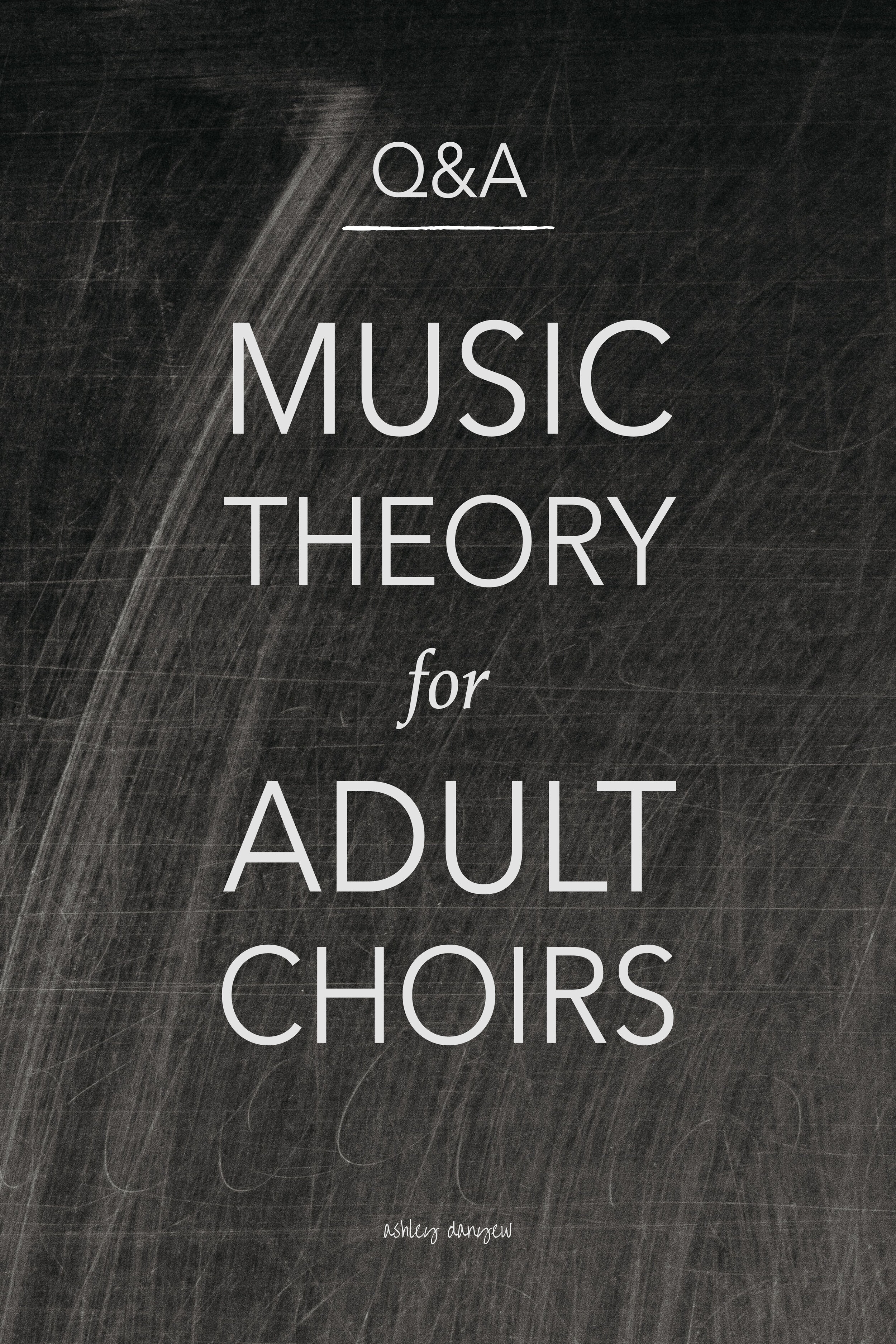Have you ever been rehearsing an anthem with your choir and thought, "If only this were a half-step lower," or practicing a song for Sunday and thought, "This feels a little low. I wish I had it in a higher key.”?
Chances are, if you’ve been in ministry long enough, you’ve had moments like these.
Transposing, or playing/singing something in another key (e.g. moving the notes of a piece up or down by a certain interval) is a practical and at times, very useful skill for all church musicians, teachers, and accompanists to have. But, it’s not one that we spend a lot of time talking about or practicing in music school (as a classical musician, at least).
You might use this skill in the following circumstances:
transposing a hymn or song up or down to a more comfortable singing key
transposing the last verse of a hymn up a half step for effect
transposing an instrumental obbligato for a different instrument
transposing an anthem down a half step for a more comfortable singing key
transposing a solo piece up or down to a more comfortable singing key
For some accompanists out there, transposing on the spot (by ear) is no big deal. They weave in and out of keys and wind their way around the circle of fifths until they arrive at the desired key with no trouble at all. For the rest of us, it takes a little more planning and practice time to pull it off. 😉
Some of you may be reading this right now and thinking, “Me? Transpose? I can’t do that without having the music written out in front of me.”
I get it. I’ve been there. That’s why I’m writing today, to share this quick, easy tip for transposing at sight:
Want to know A secret?
In certain keys, transposing is as simple as reading the notes as written
as if they were written in a key one half-step lower or higher.
Let me show you what I mean.
Transposing Down a Half Step
If the original key is a sharp key (meaning there are any number of sharps in the key signature) and you want to transpose it down a half step, simply read it as a flat key instead.
For instance:
D major can be read as D-flat major
E major can be read as E-flat major
E minor can be read as E-flat minor
G major can be read as G-flat major
A major can be read as A-flat major
B major can be read as B-flat major
B minor can be read as B-flat minor
Pretend the key signature is the flat key instead of the sharp key and read away! Remember to adjust for accidentals.
When transposing down a half step:
a sharp becomes a natural
a natural becomes a flat
a flat becomes a double-flat
Transposing Up a Half Step
What about transposing up? If you need to transpose something up a half step, simply reverse the method above and read as if the piece were written in a sharp key.
For instance:
D-flat major can be read as D major
E-flat major can be read as E major
E-flat minor can be read as E minor
G-flat major can be read as G major
A-flat major can be read as A major
B-flat major can be read as B major
B-flat minor can be read as B minor
Again, make sure you account for any accidentals.
When transposing up a half step:
a sharp becomes a double-sharp
a natural becomes a sharp
a flat becomes a natural
Try It for Yourself
The best way to develop transposing skills is by practicing and applying this skill to various situations. Here are a few transposing assignments you might try:
Play “Come, Thou Fount of Every Blessing”in the written key (E-flat major), then transpose up a half step to E major.
Play “Savior, Like a Shepherd Lead Us”in the written key (D major), then transpose down a half step to D-flat major.
Play “Amazing Grace”in the written key (G major), then transpose down a half step to G-flat major.
Play “Fairest Lord Jesus”in the written key (E-flat major), then transpose up a half step to E major.
Play “Praise God From Whom All Blessings Flow”in the written key (G major), then transpose down a half step to G-flat major.
Practice these hymns until they feel comfortable in the original key, then transpose up or down by half step, as directed.
Often times in hymn-playing, you might transpose the last verse up a half step for added effect. As such, for the hymns above with directions to transpose down a half step, (no. 2, 3, and 5), try starting with the lower key and transposing up to the written key for the last verse.
Bonus points if you can create a short modulatory transition to establish the new key in between verses! Read more about how to do that here.
Looking for more?
If you enjoyed this post, you might also enjoy The Church Musician Primer - a 4-week online keyboard skills class for church musicians designed to give you the tools and resources you need to lead and support choral and congregational singing in a variety of worship settings.
What are your best tips and tricks for transposing at sight? Please share in the comments!







































